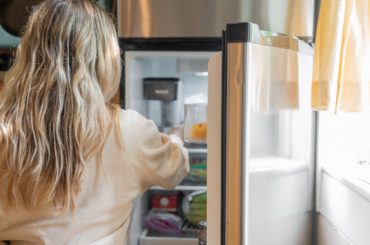If you want your child to grow up to be understanding and respectful of LGBTQ+ identities—not to mention comfortable with their own identity—one simple thing you can do is to use more LGBTQ+ inclusive language. The words we use with our kids can have a big impact on their values, perceptions, and feelings.
Start with some casual phrases that you use every day—some are so common that you may never have realized they could be perceived as excluding LGBTQ+ people. Using the examples below, you can make subtle but meaningful shifts that will help you and your family build a more inclusive community.
Instead of: husband/wife
Say: partner/spouse
When referring to your significant other, or asking about someone else’s, you can use gender-neutral terms to avoid perpetuating the idea that husband/wife is the normal or default pairing. This way, couples and families who do not fit the traditional husband/wife standard will feel more welcome.
Instead of: Where’s your mom (and dad)?
Say: Where’s your grownup/family?
Not everyone has a mom (or a dad), whether it’s because they have parents who are queer or trans, or because they have a different family structure than what’s usually seen as the norm. Using a more general term also reminds kids who do live with both a mom and a dad that not all families are the same as theirs.
Instead of: Hi, girls/ladies/boys
Say: Hi, kids/everyone
Someone who is non-binary, trans, gender fluid, questioning their gender identity, etc., might not fit into the category you’ve assumed for them, and therefore may feel alienated by what you thought was a friendly greeting. So this easy language swap is a chance to be more inclusive whenever you’re talking to a group of people.
Instead of: Do you like any boys/girls at your school?
Say: Do you have a crush on anyone at your school (whether it’s a friend crush or romantic crush)?
It can be easier for young people to come out as queer if they haven’t been constantly assumed or encouraged to be attracted to a certain gender. Being open to many possibilities—including bisexuality and asexuality—shows that you care about welcoming all people, and that your child can feel comfortable talking to you about or introducing you to any of their friends or romantic interests.
Instead of: Does anyone need the ladies’/mens’ room?
Say: Does anyone need the bathroom?
For many trans, non-binary, and gender-non-conforming people, gendered restrooms are an everyday reminder of the restrictions that society places on them. Inserting gender unnecessarily into a mundane conversation about using the bathroom is yet another way that people can mistakenly make harmful assumptions and reinforce societal barriers to LGBTQ people.
Instead of: Do you have brothers or sisters?
Say: Do you have siblings?
Not only is it shorter and easier to say, but the gender-neutral term allows for all possibilities, including non-binary siblings or siblings who may not have decided on their preferred gender markers yet.
Instead of: What’s his/her name?
Say: What’s their name?
Making snap judgments about gender or pronouns based on what someone is wearing, what kind of haircut they have, how they carry themselves, or who they’re hanging out with, simply perpetuates the strict gender categories that many LGBTQ folks are trying to free themselves of. That’s why the all-inclusive words they, them, their, theirs can be useful until you find out what pronouns the person uses.
The more you practice these language swaps, the more you’ll realize how many gendered and heteronormative phrases you may have become accustomed to hearing or using—which will help you become even more thoughtful and inclusive. And if you do make an effort to be thoughtful and inclusive, your kids or your kids’ friends just might feel more comfortable opening up to you about their questions or feelings with regards to gender and sexuality in the future.







